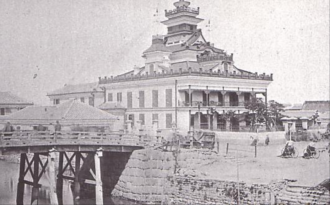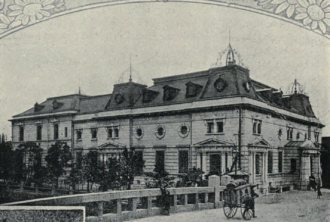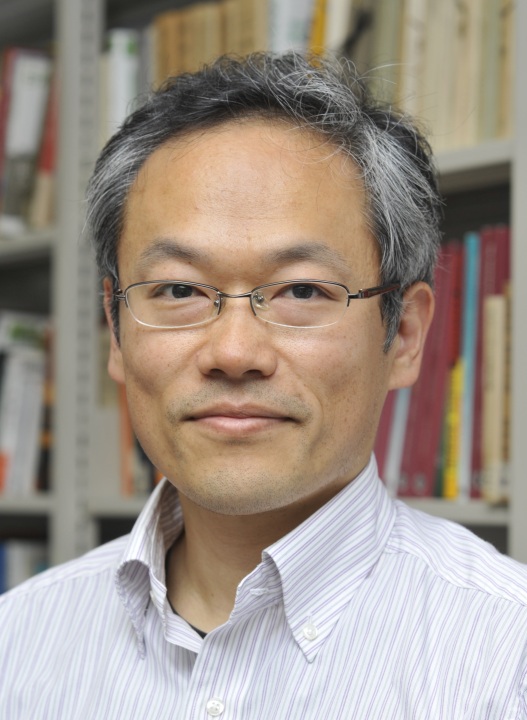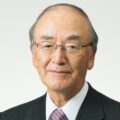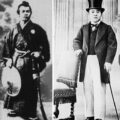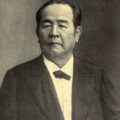Shibusawa Eiichi and the Principles of Modern Banking
As institutions prepare for the release of new banknotes in 2024, the principles and ideas of Shibusawa Eiichi, the pioneer of modern banking in Japan some 150 years before, ring as true as ever.
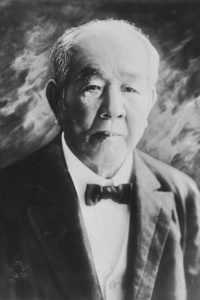
Shibnusawa Eiichi (1840–1931)
Courtesy of the National Diet Library, Japan
When the Bank of Japan reissues its banknotes in 2024, the 10,000-yen note will feature a portrait of Shibusawa Eiichi (1840–1931), “the father of modern Japanese capitalism.” In locations with deep associations to Shibusawa, such as his birthplace of Fukaya City in Saitama Prefecture, everyone is delighted.
The Shibusawa Memorial Museum meanwhile is receiving many visitors. According to Inoue Jun, director of the Museum, many inquiries have also been received from media and other organizations. “It is a very good opportunity for people to find out who Shibusawa is,” Inoue says. “People will learn that he is very much alive in this paradigm shifting era.” (The Shibusawa Memorial Museum will close in September for renewal and open again on March 28, 2020, the 180th anniversary of Shibusawa’s birth.)
Unifying the Currency
Shibusawa was born into a samurai family. From 1867 to 1868, at the very end of the long rule of the Tokugawa Shogunate (1603–1867), Shibusawa accompanied a mission led by Tokugawa Akitake (1853–1910) to participate in the Paris International Exposition and visit a number of European countries. Shibusawa’s experience of seeing and hearing about Europe’s advanced industry and society, along with his study in childhood of Confucius’s Analects and principles based on this (a theory that brought together economics and ethics), formed an important foundation for his life’s work as a businessman and philanthropist.
Banking was at the core of Shibusawa’s work establishing and nurturing some 500 companies. He was superintendent of the First National Bank on its establishment in 1873, was appointed president in 1875, and was directly involved with its management until 1916. Shibusawa also played a role in aiding the modernization of Japan through finance, such as by helping establish a nationwide banking network.
By the time Shibusawa returned from Europe, the Edo period of the Tokugawa Shogunate’s rule had already changed to the Meiji period following the restoration of imperial rule. A fundamental problem that affected the production of Japanese banknotes during the early Meiji period was the existence of over 2,000 different banknotes issued by approximately 240 Edo-period feudal clans. Changing from these Edo-period local currencies to a new paper money system was an urgent priority for the Meiji government, but it was accompanied by huge confusion. To control this confusion, and at the same time to prevent the forgery of paper currency, in 1871 the government established a Printing Bureau (now the National Printing Bureau) to oversee the production of paper banknotes. Shibusawa became its first president the following year.
At first, the Printing Bureau worked to prevent forgery with the cooperation of foreign technical experts, but in 1876, aiming to keep the production of paper currency within Japan, it established a paper mill (the Oji Paper Company) in Oji (in present-day Kita City, Tokyo) and the following year started printing paper banknotes. Following this, research and development of anti-counterfeiting technology moved ahead, mainly centered on watermarks. The notes issued in 1889 were fully developed technologically, establishing a foundation for the watermark technology in use today. The banknote watermark technology developed in Oji was jealously guarded and the strength of Japanese banknotes today resides in the combination of this traditional technology with other cutting-edge technologies.
The paper mill was established in Oji because it had plenty of the abundant water needed for paper making, and also because Oji was the home of Shoshi Kaisha (Paper Manufacturing Company, currently Oji Paper Company), which Shibusawa had previously established there. Shibusawa was working for the Ministry of Finance and set up this company because he was acutely aware of how fundamental domestically made paper for printing banknotes would be as a foundation for Japan’s economic development, as well as of its importance for printing newspapers and other materials.
Shibusawa established The First National Bank in 1873 and was appointed the bank’s first president. The bank principally performed cash transactions for the government and administrative paperwork for foreign currency transactions. Shibusawa intended to modernize Japan’s financial system by promoting a shift in the bank’s business from “government-driven” transactions towards ones mostly driven by the private sector. Yet, there were still relatively few modern large companies, and at the time gold and silver coins were still in use in the Kanto and Kansai regions, while Edo-period money changers were still performing their role as currencies issued by feudal clans were still in circulation. For these reasons, there was still little demand for a modern bank. Nevertheless, Shibusawa worked to implement future-oriented models of development, providing loans on collateral from the First National Bank to Oji Paper Company, which was in need of a substantial amount of operating capital as a modern paper factory.
Banking for the Public Good
At a symposium held in May 2015 titled, “Modern Industrial Renaissance of the City of Kita: Transition of Money from the 19th to 20th Century,” Kimura Masato, then director of the Research Department at the Shibusawa Eiichi Memorial Foundation, said, “Eiichi compared money to water located in different places that could come together to form a great river if we direct its path wisely. He was convinced that Japan and its society would prosper if embankments were built wherever they are needed to improve the water flow.” Kimura explained how Shibusawa viewed money as something that could augment the public good, noting, “Money may change society, but its significance and value may also change to reflect changes in society.”
Today, various efforts to reform Japan’s financial markets are in progress.
One is the 2014 introduction of a Japanese version of the Stewardship Code, through which the importance of enhancement of long-term corporate value and sustainability has been added to the existing concept of corporate governance. Some Japanese economists interpret this approach as having something in common with the gappon-shugi (business collectivism) advocated by Shibusawa more than a century earlier as a way of pursuing the public good and furthering business by means of the best people and funds. As well as being like the flow of a river, Kimura also pointed out that many see banks as having an important role to play together with local governments, regional universities, NPOs and others in areas such as revitalization of communities affected by population decline and community public support, while also pursuing the public good and private profit.
The Primary Role of Banks
As someone actually involved in developing Japan’s banking system and leading the underdeveloped nation into modernity, Shibusawa held three important views. He believed that banks should support business growth from a long-term perspective; that banks should further the public good through the best possible funds and people; and that banks should be ethical and develop the economy at the same time.
The collapse of Lehman Brothers has taught us that financial institutions must stop attaching importance to short-term profit and shareholder returns. In recent years, short-term capital, such as revenue producing funds, has tended to increase globally. However, banks are expected to assume the important role of looking for corporate growth potential and persistently supporting new businesses and innovation.
Today, Asian and other developing economies are driving the world economy, and it is thought this trend will continue. Enormous amounts of capital will be necessary for growth centered on those developing economies; yet, most developing economies are reliant on foreign funds. If they fail to put in place their own banking system, or do not increase their dependence on healthy international funding networks, they surely risk direct hits from the storms affecting the global economy.
For both the sake of its own economy, and from the perspective of carefully identifying possibilities for the healthy development of the world economy, Japan has a duty to once again highlight Shibusawa’s spirit and spread the word about its usefulness today. Perhaps now that Shibusawa Eiichi has reappeared on Japan’s banknotes, it is time to rediscover his ideas?
Related article
Shibusawa Eiichi’s principle of “The Analects and the Abacus” will save the Japanese economy ― Hopefully, the will of the “father of Japanese capitalism” will be passed on in the new era
https://www.japanpolicyforum.jp/economy/pt20190711230502.html
Reprint from “UNDERSTANDING SHIBUSAWA: Shibusawa Eiichi and the Principles of Modern Banking,” The Japan Journal, May / June 2019. [July 2019]
Keywords
- Shibusawa Eiichi
- Eiichi Shibusawa
- Shibusawa Memorial Foundation
- Shibusawa Memorial Museum
- Bank of Japan
- 10,000-yen note
- Tokugawa Shogunate
- Confucius
- Analects
- Printing Bureau
- Ministry of Finance
- Oji Paper Company
- First National Bank
- gappon-shugi (business collectivism)
